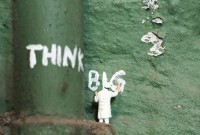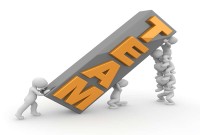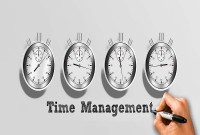- Home
- Business Processes
- Industry Knowledge
- Aerospace Industry
- Automotive Industry
- Banking Domain
- BFSI Industry
- Consumer/ FMCG Industry
- Chemicals Industry
- Engineering & Construction
- Energy Industry
- Education Domain
- Finance Domain
- Hospitality Domain
- Healthcare Industry
- Insurance Domain
- Retail Industry
- Travel and Tourism Domain
- Telecom Industry
- Leadership Skills
- eLearning
- Home
- Leadership
- Change Management
- Value – Key Driver of Change
Value – Key Driver of Change
Productivity is defined not in terms of the number of goods produced, but in terms of value-added per employee. Customers don’t really buy goods and services but in fact, they buy a value - something they value. The future is all about tangible products fulfilling intangible needs. Ideas like this can transform a business and provide them a competitive advantage to thrive in the future.
People Look for Intangible Benefits
People, as Theodore Leavitt pointed out long ago, don't really buy goods and services. They buy a value - something they value. The customers want the goods or services to be accompanied by intangible benefits associated with availability at the right time and place and to express the values they require.
On the weekend of the Christmas holiday, David had a breakdown with his electricity. He took a service from Urban Clap and the person diagnosed and corrected a very small fault which had put the central heating out of action, and put it right. On that day Urban Clap was not selling them a service or a spare part, they were selling peace of mind on a festival day. That is the value that was given even when it’s not needed. It’s the confidence that someone will come when David needs one.
The enterprise providing the value is able to share economics with the consumer by using as little matter as possible in the preparation of the goods or services. So automation and materials technology keep down the amount of processing and actual stuff that has to go into the provision of goods and services.
The idea of “No-Matter”
Automation and materials technology keep down the amount of processing and actual stuff that needs to go into the production and provision of services. Products will be produced more quickly and cheaply, and with less final bulk and weight. The phrase “No Matter” encapsulates all this competitive advantage and value add. 'No matter' as a concept also includes the role of the disposable, though we have to watch its impact on the environment. The idea of no matter also covers the idea of the invisible purpose behind a sale.
For example, the invisible purpose behind a drill is not the selling of drills as such, but rather to sellability to make holes. If you use a laser drill, you are very much into the realm of 'no matter', for the laser produces holes which are by definition the absence of matter. This is all a question of tangible products fulfilling intangible needs. Ideas like this can transform a business. It is all about the effectiveness of outcomes rather than the efficiency of inputs. So the physical and the intellectual blend in the marriage of the changing mindset and the future mindset.
Mass Customisation
Next is the paradoxical idea of 'mass customization'. This is providing the customer with precisely what he or she requires, such as a garment to suit a bulky or a slender frame. Providing something that is non-standard yet can be produced as goods of standard size, weight, or other requirements. The technology now permits the non-standard to be produced on the standard line. Just a change of the computerized instructions and the trick is performed. Now customers don’t want to wait for something that is made to measure.
The same technique of mass customization can be used to provide cultural variations required in various parts of the world without setting up a special production line. The mass economy provides the benefit of scale; mass customization allows for the differentiation and individualization of requirements.
Future Trends and Change
Not so long ago you can imagine how some traditional business houses would have resisted such changes in the mindset and approach. Managers today need to group the changes which have had the biggest impact on business, industry, and society. Types of technological development have to be focused on the understanding of futurology. They can no more stick to what they know we are good at and so on. There is an emerging need to approach the present from the standpoint of the future. That's how all these developments have occurred- so much so that we find it difficult to realize the amount of resistance they initially caused.
Many of these developments are at a relatively early stage, so there is much more to follow. It is essential that managers who are going to have to cope with such changes see them as a part of their functions to educate their workforces to understand the nature of the changes we can expect, of the world in which we live and the future we can create.
Related Links
You May Also Like
-
Thinking & Problem Solving Skills
Today's dynamic business world demands that you make decisions that significantly boost productivity and drive competitive advantage. But how do you know whether a decision will benefit the organization? And how do you know that the decisions are based on rational and statistical reasoning? Explore how to become a dynamic problem solver with the skills to make accurate decisions.
-
Generating Ideas using Brainstorming
The brainstorming technique was developed by Alex F. Osborn in 1957 and brainstorming means where a team of members generates a large amount of alternative fruitful ideas on a specific problem without any criticism and then evaluates each idea in terms of their pros and cons. Brainstorming techniques fall into four broad categories: visioning, exploring, modifying, and experimenting.
-
Understanding Corporate Strategy
Management outlook and procedures have been revolutionized by more and more innovations over the recent years. It is no longer possible to follow traditional approaches to develop your organization's direction, its management as well its effectiveness. Senior managers need to be good decision-makers. In this section, we introduce concepts for strategy, strategic planning, strategic leadership, their exact meaning and associated terms, and how to use them.
-
Productivity is defined not in terms of the number of goods produced, but in terms of value-added per employee. Customers don’t really buy goods and services but in fact, they buy a value - something they value. The future is all about tangible products fulfilling intangible needs. Ideas like this can transform a business and provide them a competitive advantage to thrive in the future.
-
Tips for Effective Time Management
After studying and analyzing how time is spent, why time is wasted, and where time is wasted you need to decide about the changes required for effective utilization of time. For this purpose, a large number of remedial measures can be taken by you. The first and foremost determinant of a planned and purposeful utilization of time is to develop consciousness of the value of time at all levels of the organization. Planning, goal setting, and defining priorities are concerns to addressed immediately.
-
In its simplest sense, decision-making is the act of choosing between two or more courses of action. Decision making is a key skill in the workplace and is particularly important if you want to be an effective leader. When decisions have to be made, there are several stages that you should go through to reach a practical solution. Understand the meaning and importance of decision making and how to look at it as a process.
-
Team Foundation in Forming Stage
This is the first stage of team development. This is the stage when the foundation of the team is laid. During the Forming stage, team members have a high dependence on their leader for guidance. Learn the practical strategies you can use during this stage to help your team develop into a highly effective performing team.
-
We define Lean as the systematic elimination of waste through a continual effort to decrease inefficiency; the lean leader strives to create a more efficient organization. Lean leadership is a philosophy. It is a consistent way of thinking and being in your role as a leader. The focus of this approach is on raising new leaders and help their team embrace a culture of continuous improvement. Learn what we mean by lean leadership style and its principles.
-
At different points in your professional career, it is helpful to identify your core values. Values are the qualities considered to be the most important guiding principles that determine the priorities in your life and greatly influence your career choices. Your career brings happiness when it is in agreement with the beliefs you have about what is important and meaningful to you. Awareness of your values will help you develop a clearer sense of what's most important to you in life.
-
Time management is the process of planning and exercising conscious control of time spent on specific activities, especially to increase effectiveness, efficiency, and productivity. The best time management techniques improve the ways you work. Time management refers to managing time effectively so that the right time is allocated to the right activity. Learn more about the five steps for effective time management viz. study, identify, analyze, decide, and implement.
Explore Our Free Training Articles or
Sign Up to Start With Our eLearning Courses

About Us
Learning
© 2023 TechnoFunc, All Rights Reserved










